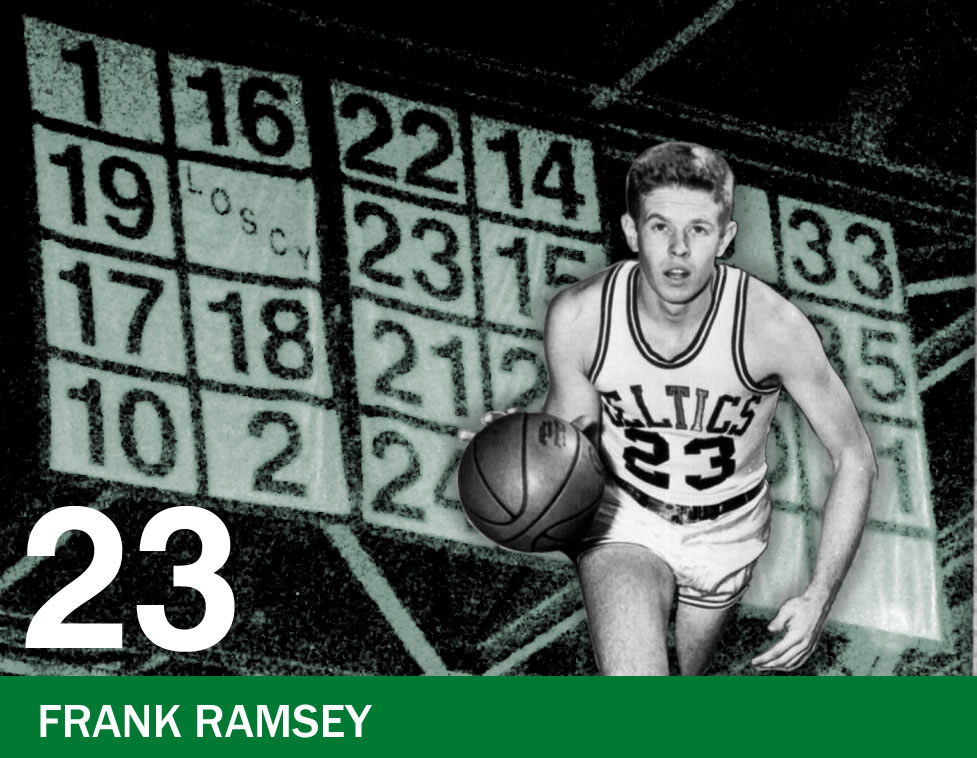From now until February 11, Red’s Army will be posting stories about the players behind the Celtics’ 22 retired numbers and that one retired nickname. Stories will be posted in the order that the numbers were retired.

The name Frank Ramsey is probably not well-known by today’s generation of Celtics fans, but one of his accomplishments is. Ramsey was the NBA’s original “Sixth Man,” filling the role conceived in the 1950s by coach Red Auerbach.
Red, a cagey innovator, realized he could gain an edge by keeping one player with starter-level talent on the bench, then utilizing that man as the first substitute to go against the opposition’s tiring starters and less-talented second unit. Ramsey, a 6’3” shooting guard and small forward, possessed the versatility that Red wanted in a Sixth Man.
Ramsey’s Sixth Man performance proved so effective that Auerbach continued the tactic later with John Havlicek. Ramsey and Havlicek both ended up in the Basketball Hall of Fame.
When the NBA introduced its Sixth Man of the Year Award in 1982, two of the first three to earn the honor were Boston’s Kevin McHale (twice) and Bill Walton (two more Hall of Famers). Thus, the Sixth Man concept has become a permanent fixture of Boston Celtics history.
Ramsey was drafted in 1953 out of the University of Kentucky, where he won the 1951 National Championship and was named an All-American. The “Kentucky Colonel” played nine seasons with the Celtics (he missed one season while serving in the military) and won seven championships. He averaged 13.4 points and 5.5 rebounds in 24.6 minutes per game over his career.
He was also a clutch playoff performer. For example, in 1958-59, Ramsey averaged 15.4 points while shooting .378 on field goals and .782 on free throws in 28.0 minutes per game. In that postseason, he raised those averages substantially to 23.2 points, .495 from the field and .802 at the line, despite a slight decrease in playing time at 27.5 minutes. The Celts also won the title.

(As a personal aside, Ramsey’s article directly caused me to become a Celtics fan. I was born and raised in Brooklyn, and as a teenager was just getting into basketball when my best friend, Joe, read the article. Joe decided he liked Ramsey and became a Celtics fan. Since Joe and I did everything together, I became a Celtics fan too. If not for that, I’d probably be a tormented Knicks fan today. Coincidentally, I once met Ramsey at a game in the old Boston Garden, and he autographed my ticket stub.)
After his playing career, Ramsey returned to his native Kentucky and a career as a bank executive.
[youtube https://www.youtube.com/watch?v=MDGlM-mIVsw] [youtube https://www.youtube.com/watch?v=xsm1xF816qU]Ramsey’s stats at Basketball Reference
Biography on Celtics.com Legends section
The retired numbers project:
Add The Sports Daily to your Google News Feed!
